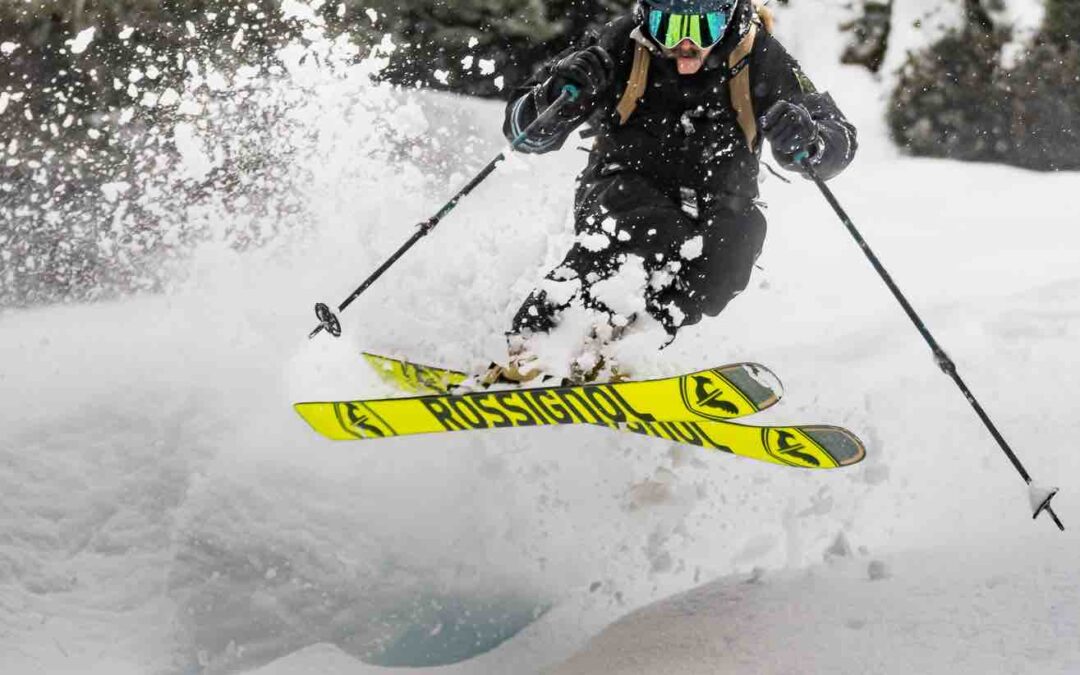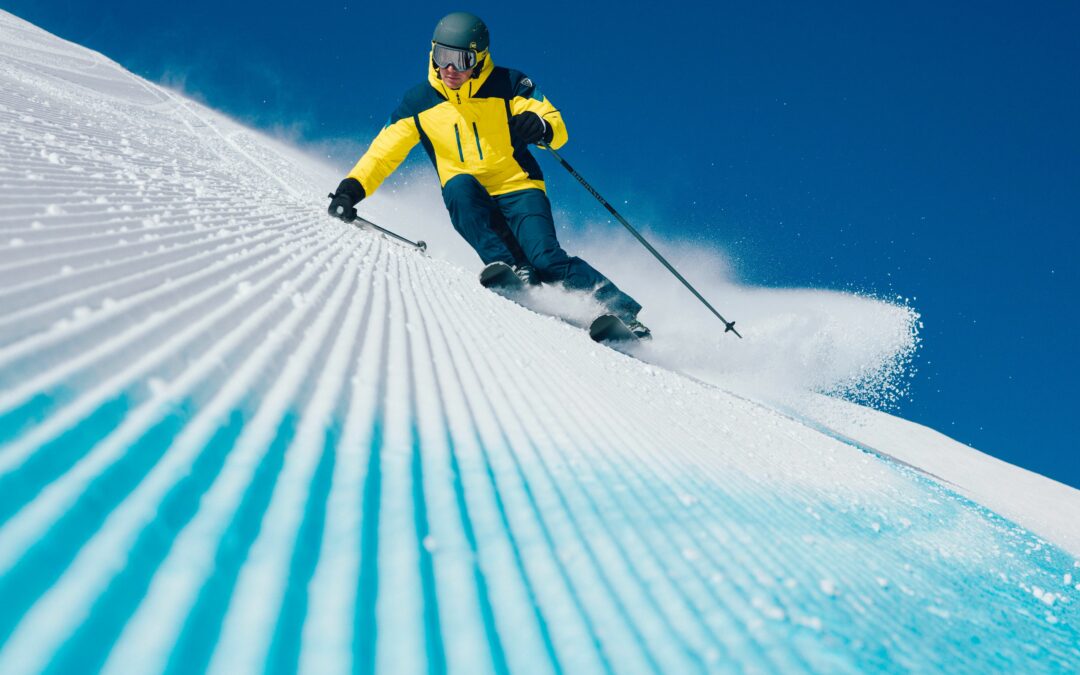Essential
When I received Rossi’s first press release about the Essential, it sounded to me more like a publicity stunt than a product pitch. Demonstrating that the technology already exists to make a ski that is 77% recyclable sounds all eco-cuddly, but my jaded brain-filter filed the announcement under “Inflated Product Puffery” and turned its attention to concocting my next podcast.
My blithe assumption that Rossignol’s new ski was designed to distract attention from the absence of any real innovation in Rossi’s 2024 collection lasted until the moment I was heading downhill on a pair. Not only did the Essential immediately announce itself as the real deal, to celebrate its debut on snow it set off a string of firecracker slalom turns that were more accurate and responsive than any arcs issuing from any of the best all-mountain skis being made today.
Beneath its retro cosmetics, the Essential turns out to be a Non-FIS Slalom, with a sidecut and on-hill demeanor closely modeled on Rossi’s Hero Elite ST Ti (123/68/104). It’s a very interesting choice, given that presumably Rossi could have achieved a similar level of recyclability using any model in its line as the prototype. Surely, if any brand wanted to lure an American skier onto a recyclable ski, they’d be fishing with better bait if they used some sort of all-terrain model.
But Rossi’s intent with the Essential is multi-tiered. The choice of a race-caliber slalom ski makes sense if one of the goals is to show that recyclability doesn’t have to come at the cost of quality. (Like most European brands, Rossi places a premium on race-ski design.) One of the unique angles of the Essential program is that Rossignol has offered to open-source its construction particulars, so competitors can achieve a similar level of recyclability. Every major manufacturer has a slalom race ski template in its inventory, to which the Rossi formula could presumably be applied.
Rossi’s decision to use a slalom ski template for its groundbreaking design harkens back to pre-shaped, pre-fat days when the vast majority of all skis sold in the U.S. – when the American market was hundreds of thousands of pairs larger than it is today – were directly descended from a slalom archetype. The short, linked turns that such a design encourages aren’t much in vogue these days, at least not on this side of the pond. The tiny waist and exaggerated silhouette of the Essential generate short, dynamic turns that are strung as tightly together as pearls in a choker. It’s an athletic style that most weekend warriors aren’t well enough conditioned to emulate, not to mention the fact that its wasp-waisted shape doesn’t travel well off-trail, further limiting its inherent appeal.
The Essential’s wood veneer finish echoes an even earlier era when skis were made of wood and only wood. For those of you taking notes, wood accounts for 35% of the Essential’s composition, all of it beech – considered a heavy wood in today’s market – and all of it recyclable. The rest of the Essential’s components are comprised of 35% aluminum and 7% steel, both recyclable, plus 12% plastic, 5% fine wood and 6% waste that can’t be reused.
Making a ski from recycled materials addresses one end of a ski’s lifecycle; turning a used ski back into its elemental materials lies at the other end the recycling circle. Rossignol has a plan for that, too; working in collaboration with its retail network and MTB, a developer in recycling machinery and logistics, Rossi will collect used skis and either re-purpose them, if useable, or break them down into component elements if they’re past their useful life. The consumer surrendering his or her used skis will receive some sort of reward for doing so. Details are understandably a bit fuzzy at this stage in the project’s development.
The ultimate goal of the Essential – to spur industry-wide adoption of sourcing and recycling virtually everything that goes into a ski – is a long way off. No one ski or even one company can make much of an impact by itself. But the process of getting to that state of affairs has to begin somewhere, and Rossignol has taken an important first step in that direction.
As a lifelong product nerd, it’s particularly satisfying to see Rossi deploy as its role model an elite slalom ski, echoing a bygone era when skis like the teal-green 4S K were perennial top sellers. At the end of the day, buying a ski that supports a worthy cause provides salve for the soul, but no one is going to ski it very often if it isn’t also a great ski. By making its prototype a race ski, Rossi has assured top-tier performance, as its Race Department could build a recreational-level slalom ski with its eyes closed, so to speak. Sure enough, the Essential is stunning on snow. Old School slalom skiers will recognize its behavioral profile the moment they put it in motion, recycling sensations that may have lain dormant for decades.
Like any good race ski, the Essential doesn’t come cheap, but its $1049.95 price tag does include a Rossi SPX 12 binding.


